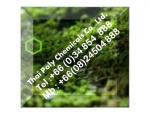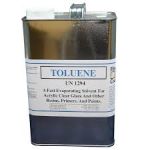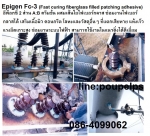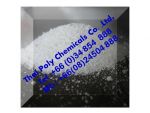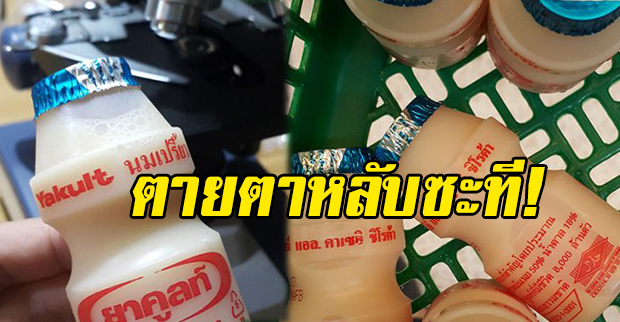ไฮดราซีน, Hydrazine, ไฮดราซีนไฮเดรต, Hydrazine Hydrate, N2H2 |
฿1 |
|
ชื่อผู้ประกาศ : ไทยโพลีมิเนอรัล เบอร์โทรศัพท์ : 034854888, 034496284 โทรศัพท์มือถือ : 0800160016 ที่อยู่ : 36/5 ม.9 ต.นาดี อ.เมืองสมุทรสาคร จ.สมุทรสาคร ร้าน ไทยโพลีมิเนอรัล |
นำเข้าและจำหน่าย ไฮดราซีน, Hydrazine, ไฮดราซีนไฮเดรต, Hydrazine
Hydrate, N2H2 สอบถามข้อมูลเพิ่มเติมได้ที่ ฝ่ายขาย บริษัท ไทยโพลีเคมิคอล จำกัด โทรศัพท์
034854888, 034496284 มือถือ 0824504888, 0800160016 โทรสาร 034854899, 034496285
ไฮดราซีน, Hydrazine, ไฮดราซีนไฮเดรต,
ไฮดราซีนไฮเดรท, Hydrazine Hydrate, N2H2
Hydrazine (also called diazane) is
an inorganic compound with the formula N2H4. It is a colourless flammable liquid with an ammonia-like odor. Hydrazine is highly toxic and dangerously unstable unless handled in solution. As of 2002, approximately 260,000 tons were manufactured annually. Hydrazine is mainly used as a foaming agent in preparing polymer foams, but significant applications also include its uses as a precursor to polymerization catalysts and pharmaceuticals. Additionally, hydrazine is used in various rocket fuels and to prepare the gas precursors used in air bags. Hydrazine is used within both nuclear and conventional electrical power plant steam cycles as an oxygen scavenger to control
Applications
The majority use of hydrazine is
as a precursor to blowing agents. Specific compounds include azodicarbonamide
and azobisisobutyronitrile, which yield 100-200 mL of gas per gram of
precursor. In a related application, sodium azide, the gas-forming agent in air
bags, is produced from hydrazine by reaction with sodium nitrite.Hydrazine is also used as a
propellant on board space vehicles, and to both reduce the concentration of
dissolved oxygen in and control pH of water used in large industrial boilers.
The F-16 fighter jet uses hydrazine to fuel the aircraft's emergency power unit.
Precursor to pesticides and
pharmaceuticalsHydrazine is a useful building
block in organic synthesis of pharmaceuticals and pesticides. One example is
3-amino-1,2,4-triazole and another is maleic hydrazide. The antitubercular drug
isoniazid is prepared from hydrazine.Hydrazine in biology
Hydrazine is the intermediate in
the anaerobic oxidation of ammonia (anammox) process. It is produced by some
yeasts and the open ocean bacterium anammox (Brocadia anammoxidans). The false
morel produces the poison gyromitrin which is an organic derivative of
hydrazine that is converted to monomethylhydrazine by metabolic processes. Even
the most popular edible "button" mushroom Agaricus bisporus produces
organic hydrazine derivatives, including agaritine, a hydrazine derivative of
an amino acid, and gyromitrin. Organic chemistry
Hydrazines are part of many
organic syntheses, often those of practical significance in pharmaceuticals,
such as the antituberculosis medication isoniazid and the antifungal
fluconazole, as well as in textile dyes and in photography.Hydrazone formation
Illustrative of the condensation
of hydrazine with a simple carbonyl is its reaction with propanone to give the
diisopropylidene hydrazine (acetone azine). The latter reacts further with hydrazine
to yield the hydrazone: 2 (CH3)2CO + N2H4 ? 2 H2O + [(CH3)2C=N]2 [(CH3)2C=N]2 + N2H4 ? 2 (CH3)2C=NNH2
The propanone azine is an
intermediate in the Atofina-PCUK synthesis. Direct alkylation of hydrazines
with alkyl halides in the presence of base yields alkyl-substituted hydrazines,
but the reaction is typically inefficient due to poor control on level of
substitution (same as in ordinary amines). The reduction of hydrazones to
hydrazines present a clean way to produce 1,1-dialkylated hydrazines.In a related reaction,
2-cyanopyridines react with hydrazine to form amide hydrazides, which can be
converted using 1,2-diketones into triazines.Wolff-Kishner reduction
Hydrazine is used in the
Wolff-Kishner reduction, a reaction that transforms the carbonyl group of a
ketone into a methylene bridge (or an aldehyde into a methyl group) via a
hydrazone intermediate. The production of the highly stable dinitrogen from the
hydrazine derivative helps to drive the reaction.Heterocyclic chemistry
Being bifunctional, with two
amines, hydrazine is a key building block for the preparation of many
heterocyclic compounds via condensation with a range of difunctional
electrophiles. With 2,4-pentanedione, it condenses to give the
3,5-dimethylpyrazole. In the Einhorn-Brunner reaction hydrazines react with
imides to give triazoles.Sulfonation
Being a good nucleophile, N2H4 can
attack sulfonyl halides and acyl halides. The tosylhydrazine also forms
hydrazones upon treatment with carbonyls.Deprotection of phthalimides
Hydrazine is used to cleave
N-alkylated phthalimide derivatives. This scission reaction allows phthalimide
anion to be used as amine precursor in the Gabriel synthesis.Reducing agent
Hydrazine is a convenient
reductant because the by-products are typically nitrogen gas and water. Thus,
it is used as an antioxidant, an oxygen scavenger, and a corrosion inhibitor in
water boilers and heating systems. It is also used to reduce metal salts and
oxides to the pure metals in electroless nickel plating and plutonium
extraction from nuclear reactor waste. Some colour photographic processes also
use a weak solution of hydrazine as a stabilizing wash, as it scavenges dye
coupler and unreacted silver halides. Hydrazine is the most common and
effective reducing agent used to convert graphene oxide (GO) to reduced
graphene oxide (rGO) via hydrothermal treatment.Hydrazinium salts
Hydrazine is converted to solid
salts by treatment with mineral acids. A common salt is hydrazine sulfate,
[N2H5]HSO4, called hydrazinium sulfate. Hydrazine sulfate was investigated as a
treatment of cancer-induced cachexia, but proved ineffective.Hydrazine azide (N5H5), the salt
of hydrazine and hydrazoic acid, was of scientific interest, because of its
high nitrogen content and explosive properties. Structurally,with sulfuric acid gives
quantitative yields of pure hydrazine sulfate and hydrazoic acid.Other industrial uses
Hydrazine is used in many
processes including: production of spandex fibers, as a polymerization catalyst;
in fuel cells, solder fluxes; and photographic developers, as a chain extender
in urethane polymerizations, and heat stabilizers. In addition, a semiconductor
deposition technique using hydrazine has recently been demonstrated, with
possible application to the manufacture of thin-film transistors used in liquid
crystal displays. Hydrazine in a 70% hydrazine, 30% water solution is used to
power the EPU (emergency power unit) on the Lockheed F-16 Fighting Falcon
fighter plane. The explosive Astrolite is made by combining hydrazine with
ammonium nitrate.Hydrazine is often used as an
oxygen scavenger and corrosion inhibitor in boiler water treatment. However due
to the toxicity and certain undesired effects[clarification needed] this
practice is discouraged.[citation neededHydrazine was first used as a
rocket fuel during World War II for the Messerschmitt Me 163B (the first
rocket-powered fighter plane), under the code name B-Stoff (hydrazine hydrate).
When mixed with methanol (M-Stoff) and water it was called C-Stoff.[citation
needed]Hydrazine is also used as a
low-power monopropellant for the maneuvering thrusters of spacecraft, and the
Space Shuttle's auxiliary power units (APUs). In addition, monopropellant
hydrazine-fueled rocket engines are often used in terminal descent of
spacecraft. Such engines were used on the Viking program landers in the 1970s
as well as the Phoenix lander and Curiosity rover which landed on Mars in May
2008 and August 2012, respectively.In all hydrazine monopropellant
engines, the hydrazine is passed by a catalyst such as iridium metal supported
by high-surface-area alumina (aluminium oxide) or carbon nanofibers, or more
recently molybdenum nitride on alumina,[31] which causes it to decompose into
ammonia, nitrogen gas, and hydrogen gas according to the following
reactions:[citation needed] 1.3 N2H4 ? 4 NH3 + N2
2.N2H4 ? N2 + 2 H2
3.4 NH3 + N2H4 ? 3 N2 + 8 H2
Reactions 1 and 2 are extremely
exothermic (the catalyst chamber can reach 800 ?C in a matter of milliseconds,)
and they produce large volumes of hot gas from a small volume of liquid, making
hydrazine a fairly efficient thruster propellant with a vacuum specific impulse
of about 220 seconds. Reaction 3 is endothermic and so reduces the temperature
of the products, but also produces a greater number of molecules. The catalyst
structure affects the proportion of the NH3 that is dissociated in Reaction 3;
a higher temperature is desirable for rocket thrusters, while more molecules
are desirable when the reactions are intended to produce greater quantities of
gas[citation needed].Other variants of hydrazine that
are used as rocket fuel are monomethylhydrazine, (CH3)NH(NH2) (also known as
MMH), and unsymmetrical dimethylhydrazine, (CH3)2N(NH2) (also known as UDMH).
These derivatives are used in two-component rocket fuels, often together with
nitrogen tetroxide, N2O4, sometimes known as dinitrogen tetroxide. These
reactions are extremely exothermic, and the burning is also hypergolic, which
means that it starts without any external ignition source.There are ongoing efforts to
replace hydrazine along with other highly toxic substances from the aerospace industry. Promising alternatives include hydroxylammonium nitrate, 2-Dimethylaminoethylazide(DMAZ)and
Fuel cells
The Italian catalyst manufacturer
Acta has proposed using hydrazine as an alternative to hydrogen in fuel cells.
The chief benefit of using hydrazine is that it can produce over 200 mW/cm2
more[clarification needed] than a similar hydrogen cell without the need to use
expensive platinum catalysts. As the fuel is liquid at room temperature, it can
be handled and stored more easily than hydrogen. By storing the hydrazine in a
tank full of a double-bonded carbon-oxygen carbonyl, the fuel reacts and forms
a safe solid called hydrazone. By then flushing the tank with warm water, the
liquid hydrazine hydrate is released. Hydrazine has a higher electromotive
force of 1.56 V compared to 1.23 V for hydrogen. Hydrazine breaks down in the
cell to form nitrogen and hydrogen which bonds with oxygen, releasing water.
Hydrazine was used in fuel cells manufactured by Allis-Chalmers Corp.,
including some that provided electric power in space satellites in the 1960s.Gun propellant
A mixture of 63% hydrazine, 32%
hydrazine nitrate and 5% water is a standard propellant for experimental
bulk-loaded liquid propellant artillery. The propellant mixture above is
notable for being one of the most predictable and stable, with a remarkably
flat pressure profile during firing. Misfires are usually caused by inadequate
ignition. The movement of the shell after a misignition causes a large bubble
with a larger ignition surface area, and the greater rate of gas production
causes very high pressure, sometimes including catastrophic tube failures (i.e.
explosions).Hydrazine hydrate is widely used
as a reducing agent or an intermediate of synthesis in various industrial
sectors like water treatment (effluents, industrial boilers), chemical
treatment process (metals, mine extraction) or active ingredients synthesis
(pharmaceuticals and agrochemicals).Hydrazine hydrate is marketed as a
water-based solution at different hydrazine concentration| Hydrazine derivatives are used in the manufacture of herbicides
and fungicides, as well as plant growth regulators. From tranquilizers to the primary drug for controlling tuberculosis, hydrazine derivatives have proven Used as an oxygen scavenger in boiler water, 35% hydrazine solution reduces oxidation in both low and high pressure steam systems. |
In fact,
hydrazine is the best material that can be used for protection against
Currently,
the plastics industry uses hydrazine derivatives in the creation of blowing
agents and polymerization initiators. Use of these derivatives is also being
investigated for the formulation of polymers.Terminology
Hydrazine solution strength is usually given as the percent
contained hydrazine. However, when hydrazine and water are mixed, a monohydrate
(N2H4.H20) is formed through hydrogen bonding. Therefore, the amount of
hydrazine in a solution can also be designated as the percentage of hydrazine
monohydrate. There is a simple relationship between the two designations, based
on their molecular weights.Hydrazine has
a molecular weight of 32 and the monohydrate has a molecular weight of 50. The
ratio of their weight is 32/50 or 0.64. Therefore, 100% monohydrate would contain
32/50 or 64% hydrazine. This is the reason 100% hydrazine hydrate can be used
interchangeably with 64% contained hydrazine by weight.To avoid
confusion caused by dual terminology, always expresses hydrazine content in
terms of contained hydrazine. Since other companies may not follow this
convention, users should ascertain which terminology applies when reference to
hydrazine solution concentration is involved.Uses: This
product is widely used in the manufacture of pure metal, the thermal power
plant boiler antioxidant, synthetic fibers, dyes, imaging, restore, and other
chemicals, pigments, resin, food, defense industry, scientific research,
organic synthesis, pesticides and raw material of manufacturing intermediates
of AC foaming agent .
สอบถามข้อมูลเพิ่มเติมได้ที่
ฝ่ายขายThai Poly Chemicals Co., Ltd.
บริษัท ไทยโพลีเคมิคอล จำกัด
ที่อยู่36/5 ม.9 แขวง/ตำบลนาดี
เขต/อำเภอเมืองสมุทรสาคร
จังหวัดสมุทรสาคร รหัสไปรษณีย์74000Tel.: 034854888,
034496284
Fax.: 034854899,
034496285
Mobile: 0824504888,
0800160016
Website :
www.thaipolychemicals.comEmail1 : thaipolychemicals@hotmail.com
Emaiil2 : info@thaipolychemicals.com
ไฮดราซีนไฮเดรทไฮดราซีนไฮเดรตN2H2HydrazineHydrateไฮดราซีน

